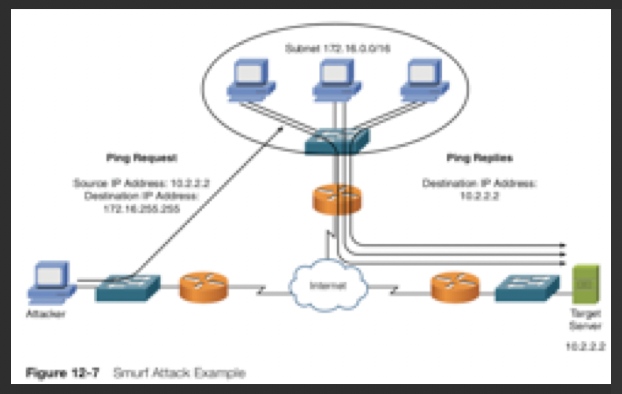Meow's CyberAttack - Application/Server Attacks - DDos Dos - ICMP Attacks
Meow’s CyberAttack - Application/Server Attacks - DDos Dos - ICMP Attacks
ICMP Attacks
- Availability Attacks
- Many networks permit the use of ICMP traffic (like ping…), because pings can be useful for network troubleshooting.
- attackers can use ICMP for DoS attacks.
- ICMP DoS attack variant:
ping of death
- uses ICMP packets that are too big.
- sends ICMP traffic as a series of fragments, to
overflow the fragment reassembly bufferson the target device. network attacks, sending an abnormally large packet size that exceeds TCP/IP specifications.
- This is when an IP datagram is received with the “protocol” field in the IP header set to 1 (ICMP), the Last Fragment bit is set, and (IP offset ` 8) + (IP data length) >65535.
- the IP offset (which represents the starting position of this fragment in the original packet, and which is in 8-byte units) plus the rest of the packet is greater than the maximum size for an IP packet.
Smurf attack can use ICMP traffic,
- Ping a broadcast address using a spoofed source address directed to a subnet, to flood a target system with ping replies.
- attacker sends a ping to the broadcast address of subnet 172.16.0.0/16.
- This collection of pings instruct devices on that subnet to send their ping replies to the target system at IP address 10.2.2.2
- thus flooding the target system’s bandwidth and processing resources.
- in the subnet being used for the Smurf attack, thousands of systems could potentially be involved and send ping replies to the target system.
Prevented smurf
- Command for cisco routers: No ip directed-broadcasts
This post is licensed under CC BY 4.0 by the author.

Comments powered by Disqus.